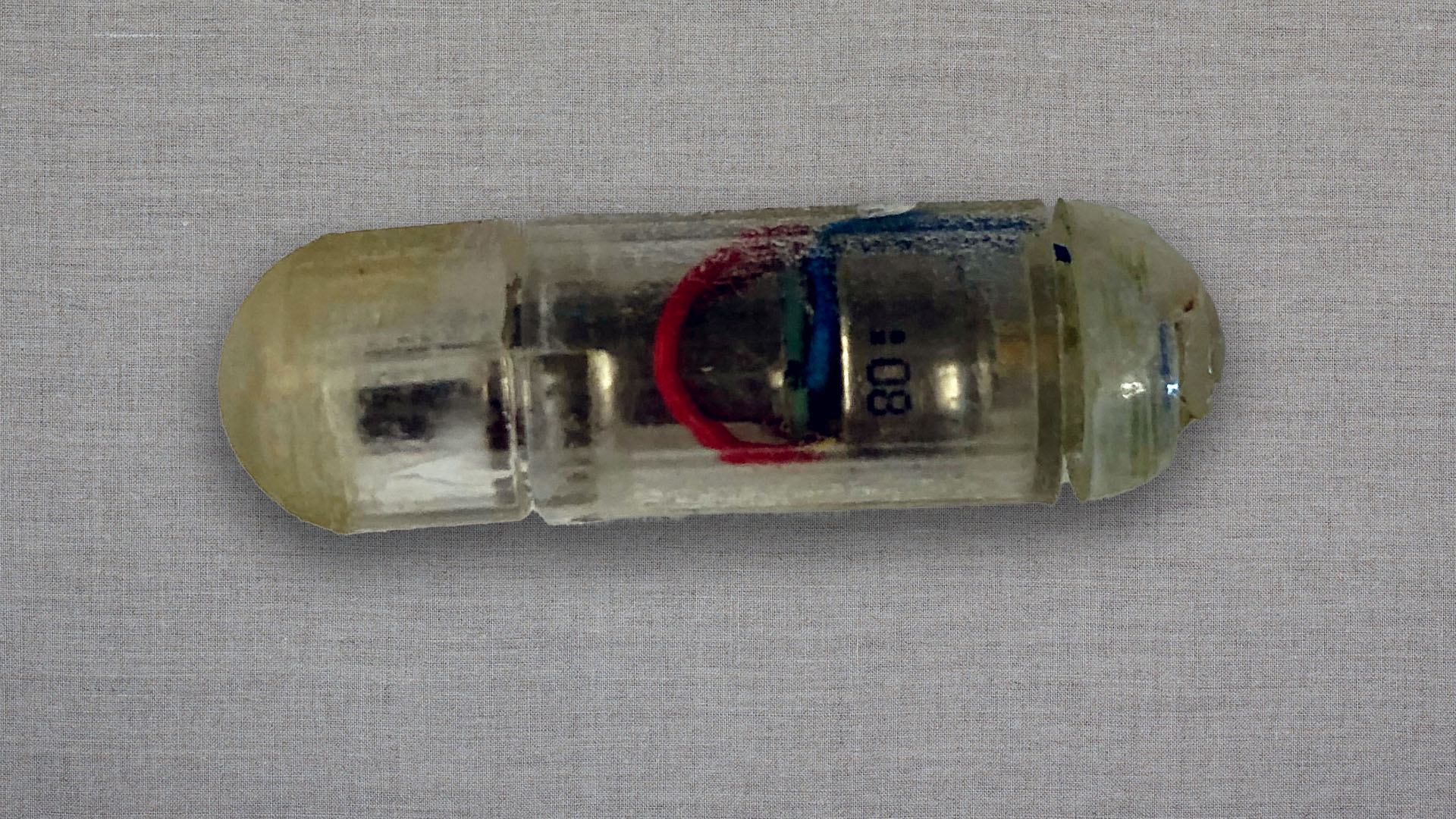A vibrating pill could help treat obesity, pig study finds
Pigs that swallowed the vibrating pill before meals ate around 40% less than those that did not, according to the study.

When you scarf down a massive dinner, your stomach will stretch to fit each morsel, activating receptors that ping the brain to let it know when you are "full."
A group of engineers has developed a vibrating pill that could help trigger that filled-up sensation sooner, which may one day help treat obesity. When the ingestible pill was given to pigs 20 minutes before eating, they ate roughly 40% less than pigs without the vibrating device, according to a study published Dec. 22 in the journal Science Advances.
"For somebody who wants to lose weight or control their appetite, it could be taken before each meal," Shriya Srinivasan, an assistant professor of bioengineering at Harvard University and lead author on the study, said in a statement. "This could be really interesting in that it would provide an option that could minimize the side effects that we see with the other pharmacological treatments out there."
Related: Common weight-loss surgery for teens may weaken their bones
Past studies have shown that vibration can create the illusion of stretching in skeletal muscle fibers. With this in mind, Srinivasan and her colleagues developed a pill to mimic this phenomenon in stomach muscles "that could modulate hormones and eating patterns," she said. To prevent the pill from vibrating before it reaches its destination, they coated it in a gelatinous membrane that dissolves only when submerged in gastric fluid, or the acidic juices that slosh around in the stomach to break down food. Once the pill's outer layer dissolves, it releases a spring-loaded pin that activates a vibrating motor, which runs for about 30 minutes. The pigs eventually poop out the pills.
After developing the pill, the researchers performed multiple experiments to test its safety and effectiveness in 12 Yorkshire pigs. For their main feeding test, the scientists separated the pigs into two groups, with one cluster receiving the vibrating pill and another given an inert placebo pill. Over the next two weeks, the pigs were given 108 meals and overall, animals with the device ate significantly less than the other group.
Additionally, the researchers took blood samples from the pigs before and after they were given the device, and found that the vibrating-pill-popping swines had lower levels of ghrelin, also known as "the hunger hormone," than the control group.
Get the world’s most fascinating discoveries delivered straight to your inbox.
"The strong hormonal response to the vibrating capsules surprised me. It seems the body might be truly tricked into thinking it has just consumed a satisfying meal," Benjamin Terry, an associate professor of mechanical engineering at Brigham Young University who was not involved in the study, told Live Science in an email.
After the feeding experiment, an endoscopist assessed the lining of the pigs' stomachs and found that there were no abrasions, irritation or inflammation, suggesting that the vibrating pill does not harm the stomach muscles. Now, the researchers are planning to scale up the manufacturing of the pill, a step required to launch clinical trials in humans.
While these results are promising, "it remains to be seen if the results from this work will translate to humans," Terry said. Currently, the device is the largest allowed capsule size by the Food and Drug Administration, which might be "prohibitively large" if it eventually hits the consumer market, he said.
And while the pill might trigger some of the physical mechanisms that contribute to fullness, people overeat for many reasons "unrelated to satiety," including stress, distraction, social pressure and environmental cues, Terry said. "It's not clear that any of these eating pressures will be diminished by the vibrating capsules," he added.
However, the authors say that this vibrating pill could eventually offer a cost-effective and less invasive alternative to other obesity treatments, such as surgeries or intragastric balloons, a medical implant designed to reduce the volume of your stomach.
"For a lot of populations, some of the more effective therapies for obesity are very costly," Srinivasan said. "I'd love to see how this would transform care and therapy for people in global health settings who may not have access to some of the more sophisticated or expensive options that are available today."

Kiley Price is a former Live Science staff writer based in New York City. Her work has appeared in National Geographic, Slate, Mongabay and more. She holds a bachelor's degree from Wake Forest University, where she studied biology and journalism, and has a master's degree from New York University's Science, Health and Environmental Reporting Program.


